di Maria Morigi
Nel dicembre 2023, sono riemerse le tensioni tra Iran e Pakistan lungo i confini, con incursioni e dichiarazioni ufficiali riguardanti attacchi terroristici. Questi eventi mettono in evidenza la complessa situazione nel Balochistan, una regione ricca di risorse ma segnata da movimenti separatisti e insurrezioni.
Questo intervento è stato realizzato come parte della conferenza internazionale conference “Terrorism: State and Non-State Sponsored Versions” organizzata da TerrorSpring, una fondazione iraniana che lotta contro il terrorismo.
VERSIONE ITALIANA
Nel dicembre 2023 si verificano nell’area di confine tra Iran e Pakistan attacchi aerei e incursioni delle guardie di frontiera di Teheran. Le tensioni sono presto superate, infatti il 16 dicembre, al Forum economico di Davos il ministro degli Esteri dell’Iran, H. Amir-Abdollahian, dichiara: “In territorio pakistano abbiamo affrontato solamente terroristi iraniani… nessun civile del Pakistan, Paese amico e fratello, è stato colpito da missili e droni iraniani. E’ stato bersagliato il gruppo Jaish al-Adl, un gruppo terrorista iraniano che si rifugia in luoghi della provincia pakistana del Balochistan”.
In gennaio 2024 l’ex ambasciatore e ministro degli Esteri del Pakistan, Shamshad Ahmad Khan, in una trasmissione della TV pakistana riconosce la legittimità delle preoccupazioni della Repubblica Islamica dell’Iran sulla minaccia terroristica ai confini e critica il Pakistan per le misure inadeguate nel prevenire attacchi terroristici presso i confini iraniani. Ahmad Khan afferma anche che gli Stati Uniti e il regime sionista sostengono deliberatamente e finanziano il gruppo Jaish al-Adl proprio con lo scopo di danneggiare le relazioni Iran-Pakistan e la sicurezza regionale.
Jaish al-Adl, “Armata della Giustizia”, designata organizzazione terroristica da Iran, Giappone, Nuova Zelanda e USA, ha collaborato con gruppi separatisti curdi e ha denunciato l’intervento iraniano nella guerra civile siriana. Da anni il gruppo terroristico, fondato nel 2012 e combattente per l’indipendenza del Sistan iraniano e del Balochistan, conduce azioni terroristiche contro l’Iran dal territorio pakistano.
E’ perciò necessario un approfondimento sul Balochistan, regione geografica, arida e montuosa che si affaccia sul Mar arabico e si estende a cavallo di tre confini (Iran, Pakistan e Afghanistan). É abitata dalla comunità etnica Baloch, per lo più nomade, che si considera emarginata – nonostante le ricchezze del territorio in gas naturale, carbone e minerali – ed esclusa dai vantaggi economici e commerciali offerti dal porto di Gwadar sul Mare Arabico, punto d’arrivo del corridoio economico intermodale Cina- Pakistan (CPEC), ramo della Nuova Via della Seta (BRI).
L’indipendentismo nel Balochistan pakistano ha avuto inizio nel 1948 con la cessione al Pakistan del preesistente dominio britannico, il Khanato di Kalat. Il trattato di cessione, pur garantendo l’indipendenza del Khanato, rimetteva al Pakistan tutte le funzioni di governo. Così la regione ha vissuto una serie di insurrezioni separatiste/irredentiste, tese a realizzare il “Grande Balochistan”.
In Pakistan è la provincia più grande (capitale Quetta) e più a rischio terrorismo: in questa regione sono esplose rivolte nel 1948, 1958–59, 1962–63 e 1973–1977 in cui era coinvolto il Balochistan Liberation Front (BLF) gruppo fondato da Jumma Khan nel 1964 a Damasco e che ha svolto un ruolo importante anche nell’insurrezione del 1968-1973 nelle province iraniane del Sistan e del Balochistan. L’insurrezione del BLF fu sconfitta sia in Pakistan che in Iran e il gruppo sembrò cancellato per riemergere nel 2004 sotto la guida di Allah Nazar Baloch con attacchi contro civili, giornalisti, funzionari governativi e militare (in gennaio 2023 rivendicazione del BLF dell’attentato al mercato del pesce di Turbat). Questa nuova insurrezione a bassa intensità a partire dal 2003 ha dato grossi problemi di sicurezza sia al Pakistan che all’Iran, entrambi chiamati a confrontarsi con i locali gruppi del jihadismo sunnita. Le rivendicazioni etno-nazionaliste per una maggiore autonomia dal Pakistan si sono saldate con le proteste relative alla distribuzione delle risorse, che il governo pakistano è accusato di sbilanciare a favore della maggioranza etnica Punjabi. Nella zona si stanno rafforzando, oltre all’estremismo jihadista di matrice sunnita, anche l’irredentismo anti-indiano.
Oggi il più importante gruppo militante nell’area di confine è il Baloch Liberation Army (BLA), il più grande nella galassia di movimenti indipendentisti. Il movimento BLA, nato nel 2000, raccoglie l’eredità dei movimenti degli anni ’70 (soprattutto del BLF); leader è Khair Bakhsh Marri, appartenente ad una delle due potenti tribù (Marri e Bugti) che occupano vaste aree nel nord (Marri) nelle principali zone estrattive e nel sud (Bugti) vicino allo strategico porto di Gwadar. Ai separatisti e nazionalisti sunniti del BLA da una decina di anni si aggiungono gruppi, come il già nominato Jaish al-Adl e Ansar Al-Furqan altro gruppo armato iraniano Baloch sunnita e anch’esso operativo in Iran. Dal 2013, anno del primo attacco di militanti del gruppo Jaish al-Adl, Iran e Pakistan si guardano con sospetto. Ciascuna parte incolpa l’altra di aver chiuso un occhio sui militanti. Il Pakistan afferma di aver condiviso prove con l’Iran sulla presenza in Iran dei separatisti Baloch che lanciano attacchi transfrontalieri contro le truppe pakistane e sostiene di aver arrestato membri di Jaish al-Adl responsabili di attacchi in Iran.
Tutto questo preoccupa per la “frattura” che si potrebbe creare nell’ambito dell’alleanza BRICS (Brasile, Russia, India, Cina, Sud Africa). Se infatti dal 1°gennaio 2024 Egitto, Etiopia, Arabia Saudita, Emirati Arabi uniti – e soprattutto Iran – sono entrati ufficialmente a far parte dei BRICS, anche il Pakistan ha richiesto di partecipare. E la Cina da parte sua raccomanda a tutti moderazione, spendendosi per attenuare le frizioni. Comprensibile, dunque, la soddisfazione con cui i media occidentali denunciano questo accendersi di conflitti in un’area prossima a Israele – Palestina – Libano – Yemen – Mar Rosso. Di fatto, i focolai di terrorismo sono in gran parte conseguenza della politica occidentale neocoloniale che ha armato dovunque gruppi anti-sciiti e condotto una devastante guerra di sanzioni. Le recenti azioni di terrorismo eterodiretto in Iran ne sono la prova: 3 gennaio 2024 nella città di Kerman vicino alla tomba del generale iraniano Qassem Soleimani (87 morti e centinaia di feriti) rivendicato da IS e l’uccisione di 11 poliziotti nella città di Rask, nell’est dell’Iran.
ENGLISH VERSION
Tensions between Iran and Pakistan: Hetero-Directed Terrorism in the Balochistan Region
In December 2023, tensions resurfaced between Iran and Pakistan along the borders, with incursions and official statements regarding terrorist attacks. These events highlight the complex situation in Balochistan, a region rich in resources but marked by separatist movements and insurgencies.
This speech was part of the international conference “Terrorism: State and Non-State Sponsored Versions” organized by TerrorSpring, an Iranian foundation that fights terrorism.
In December 2023, airstrikes and border incursions by Tehran’s frontier guards occurred in the border area between Iran and Pakistan. However, tensions were quickly eased. On December 16, at the Davos Economic Forum, Iran’s Foreign Minister, H. Amir-Abdollahian, stated, “We have only faced Iranian terrorists on Pakistani territory… no civilians from Pakistan, a friendly and fraternal country, have been hit by Iranian missiles and drones. The Jaish al-Adl group, an Iranian terrorist group that takes refuge in areas of the Pakistani province of Balochistan, was targeted.”
In January 2024, former Pakistani ambassador and foreign minister Shamshad Ahmad Khan, in a Pakistani TV broadcast, acknowledged the legitimacy of the Islamic Republic of Iran’s concerns about the terrorist threat at the borders and criticized Pakistan for inadequate measures in preventing terrorist attacks near Iranian borders. Ahmad Khan also asserted that the United States and the Zionist regime deliberately support and finance the Jaish al-Adl group with the aim of damaging Iran-Pakistan relations and regional security.
Jaish al-Adl, “Army of Justice,” designated as a terrorist organization by Iran, Japan, New Zealand, and the USA, has collaborated with Kurdish separatist groups and denounced Iranian intervention in the Syrian civil war. For years, the terrorist group, founded in 2012 and fighting for the independence of Iranian Sistan and Balochistan, has carried out terrorist actions against Iran from Pakistani territory.
Therefore, a deeper understanding of Balochistan is necessary. It is a geographic region, arid and mountainous, bordering the Arabian Sea and spanning three borders (Iran, Pakistan, and Afghanistan). It is inhabited by the Baloch ethnic community, mostly nomadic, which considers itself marginalized—despite the territory’s wealth in natural gas, coal, and minerals—and excluded from the economic and commercial benefits offered by the port of Gwadar on the Arabian Sea, the endpoint of the China-Pakistan Economic Corridor (CPEC), a branch of the Belt and Road Initiative (BRI).
Independence movements in Pakistani Balochistan began in 1948 with the transfer of the former British domain, the Khanate of Kalat, to Pakistan. While the transfer treaty guaranteed the Khanate’s independence, it vested all governing functions in Pakistan. Thus, the region experienced a series of separatist/irredentist insurgencies aimed at realizing the “Greater Balochistan.”
In Pakistan, it is the largest province (with Quetta as its capital) and most at risk of terrorism: revolts erupted in this region in 1948, 1958–59, 1962–63, and 1973–1977, involving the Balochistan Liberation Front (BLF), a group founded by Jumma Khan in 1964 in Damascus, which also played a significant role in the 1968-1973 insurgency in the Iranian provinces of Sistan and Balochistan. The BLF insurgency was defeated both in Pakistan and Iran but seemed to re-emerge in 2004 under the leadership of Allah Nazar Baloch, conducting attacks against civilians, journalists, government officials, and the military (such as the BLF’s claim of responsibility for the Turbat fish market bombing in January 2023). This new low-intensity insurgency since 2003 has posed significant security challenges to both Pakistan and Iran, both grappling with local Sunni jihadist groups. Ethno-nationalist demands for greater autonomy from Pakistan have merged with protests regarding resource distribution, which the Pakistani government is accused of favoring the Punjabi ethnic majority. In the area, in addition to Sunni jihadist extremism, anti-Indian irredentism is also gaining strength.
Today, the most significant militant group in the border area is the Baloch Liberation Army (BLA), the largest in the galaxy of independence movements. The BLA movement, born in 2000, inherits the legacy of movements from the 1970s (especially the BLF); its leader is Khair Bakhsh Marri, belonging to one of the two powerful tribes (Marri and Bugti) that occupy vast areas in the north (Marri) in major mining areas and in the south (Bugti) near the strategic port of Gwadar. In addition to the Sunni separatists and nationalists of the BLA for about a decade, groups like the aforementioned Jaish al-Adl and Ansar Al-Furqan, another Sunni Baloch armed group also operating in Iran, have joined. Since 2013, the year of the first attack by Jaish al-Adl militants, Iran and Pakistan have viewed each other with suspicion. Each side blames the other for turning a blind eye to militants. Pakistan claims to have shared evidence with Iran of the presence of Baloch separatists in Iran launching cross-border attacks against Pakistani troops and claims to have arrested Jaish al-Adl members responsible for attacks in Iran.
All of this is concerning due to the “fracture” that could develop within the BRICS alliance (Brazil, Russia, India, China, South Africa). Indeed, since January 1, 2024, Egypt, Ethiopia, Saudi Arabia, the United Arab Emirates—and notably Iran—have officially joined BRICS, and Pakistan has also requested to participate. China, for its part, recommends moderation to all, working to mitigate tensions. Therefore, it is understandable why Western media denounce this escalation of conflicts in an area close to Israel-Palestine-Lebanon-Yemen-Red Sea. In fact, the terrorism hotspots are largely a consequence of Western neo-colonial policy, which armed anti-Shiite groups everywhere and conducted a devastating war of sanctions. The recent acts of hetero-directed terrorism in Iran are evidence of this: on January 3, 2024, in the city of Kerman near the tomb of Iranian General Qassem Soleimani (87 dead and hundreds injured) claimed by IS and the killing of 11 policemen in the city of Rask, in eastern Iran.







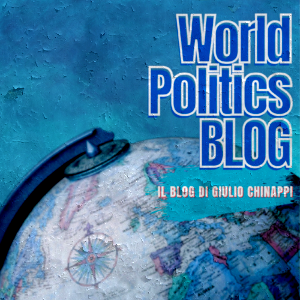
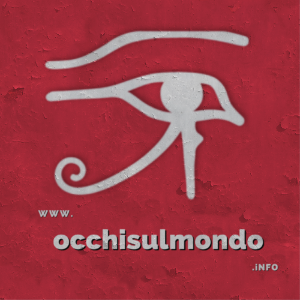



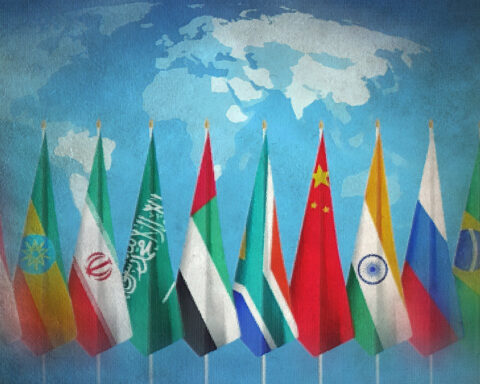
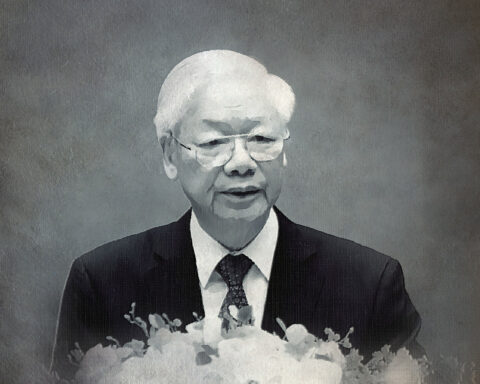
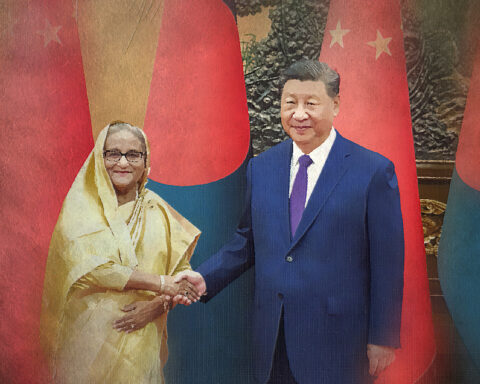



Il CeSE-M sui social